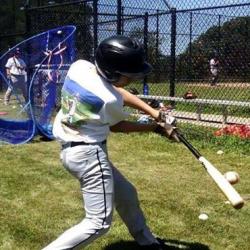Shohei Ohtani is a crafty pitcher and a power hitter, too, but it’s way too early to make judgments about whether he’s the “Japanese Babe Ruth.”
A Japanese phenom is off to a fast start in Major League Baseball. His name: Shohei “Sho-time” Ohtani.

Courtesy: USA Today
The Angels’ DH-pitcher combo player has been impressive. Ohtani is dazzling hitters with 99-mph fastballs and filthy sliders, and he’s hitting 400-foot bombs.
Numbers tell the story. Ohtani has 19 K’s in 15 innings–allowing only 6 earned runs during that span–and he’s hitting .342 with 3 homers in 10 games at the plate.
But it’s way too soon to call him “The Japanese Babe Ruth.”
What we know, for sure, is that Ohtani isn’t the first player from Japan to make a splash in MLB. A number of Japanese pitchers have made the transition from Nippon Professional Baseball (NPB) to the MLB. Some of them have become stars, too. Yu Darvish and Hideo Nomo come to mind.
But not every former NPB pitching star makes it here. Perhaps the best example is Hideki Irabu. Irabu, who signed with fanfare in the late 1990’s, bounced around the majors (5+ ERA) before returning to Japan to close out his career.
And while a number of Japanese position players have thrived in the States–legendary outfielder/DH Ichiro Suzuki is the biggest name–Ichiro is the exception, not the rule. Of the 59 NPB players who’ve made the transition to the MLB, only 14 are position players. Besides Ichiro, only Hideki Matsui and Nori Aoki have lasted more than five seasons.
Why is there a disparity between achieving success as a pitcher vis-a-vis a hitter? Some analysts–Bobby Valentine is one–believe that it’s easier to adapt to international hitting than adjust to international pitching. “A hitter’s success depends on knowing the opposition,” Valentine explains. “Hitters have to decipher the pitch and then complete the incredible feat of hitting a baseball.” Valentine believes that part of the equation is becoming familiar with pitchers’ tendencies. That’s much easier to do in the NPB because there are fewer teams (and fewer pitchers) there than there are in the States.
What we know so far is this: Ohtani is adapting well to the tendencies of American hitters and he has shown potential against American pitchers. His blazing fastball and knee-buckling slider are recipes for success anywhere, and his 400-foot dingers are turning heads.
While I think it’s too soon to make judgments about Ohtani’s career prospects, we know what will happen if Ohtani ends up being the real deal. If he is, then international scouts will be obsessed with finding the next Shohei Ohtani.














